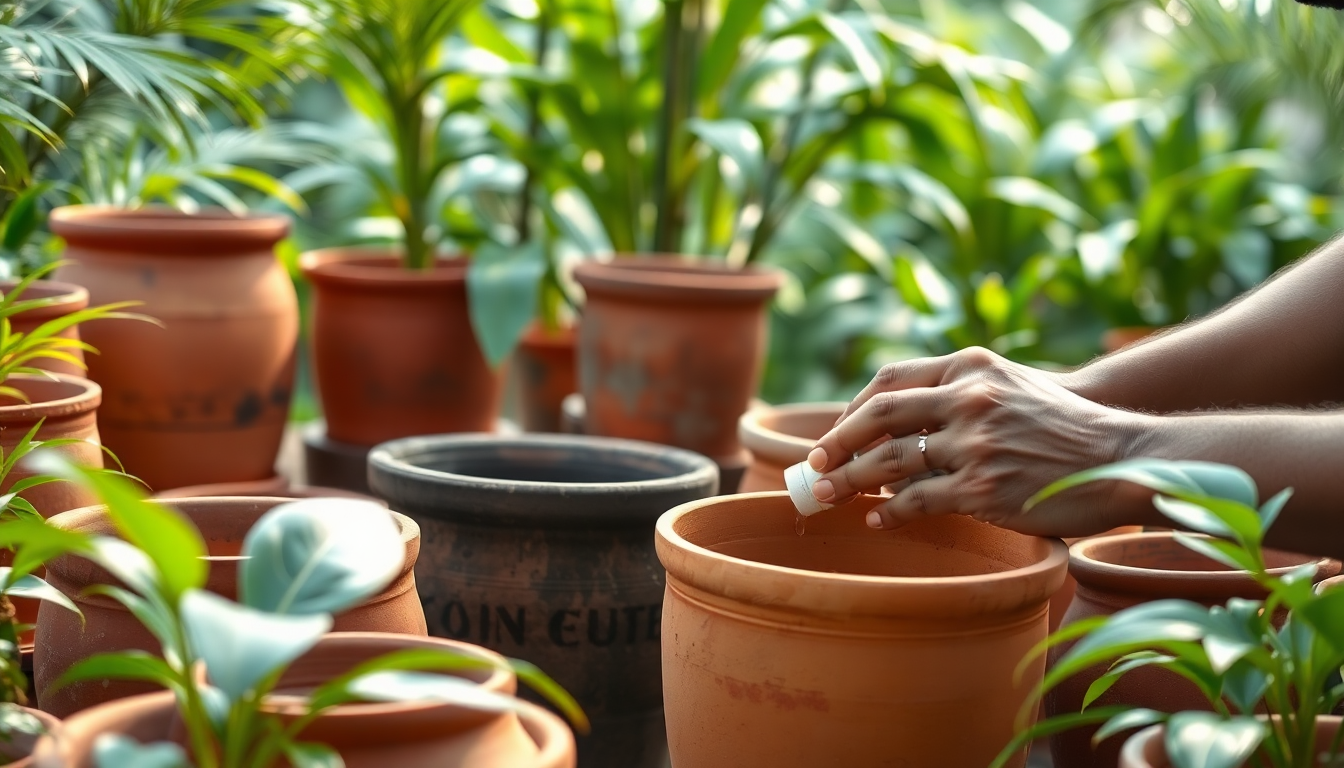As the sun rises over the lush gardens of Sarjapur, the air is thick with the scent of blooming flowers and the gentle hum of nature. For many residents, tending to their beloved terracotta pots has become a cherished pastime, a way to connect with the earth and bring a touch of natural beauty to their homes. However, maintaining these delicate vessels in Bangalore's humid climate can be a challenge.
Fortunately, Idyl, the one-stop-shop for all your gardening needs, is here to share their expert tips and tricks for keeping your terracotta pots in pristine condition. Whether you're a seasoned green thumb or a budding gardener, this comprehensive guide will equip you with the knowledge to ensure your plants thrive in Sarjapur's unique environment.
Understanding Terracotta Pots
Terracotta pots, with their distinctive earthy hue and porous nature, have long been a staple in the world of gardening. These clay-based containers offer numerous benefits, including excellent drainage, natural insulation, and a timeless aesthetic that complements any outdoor space.
However, the very qualities that make terracotta pots so desirable also require special care and attention. The porous nature of the clay can lead to rapid moisture loss, while the humid climate of Sarjapur can contribute to the growth of mold and mildew if left unchecked.
Preparing Terracotta Pots for Planting
Before you can begin planting in your terracotta pots, it's essential to properly prepare them. Start by thoroughly cleaning the pots, using a mild soap and warm water to remove any dirt, debris, or residue from previous plantings. Rinse the pots thoroughly and allow them to dry completely.
Next, consider sealing the interior of the pots with a clear, food-safe sealant. This will help to reduce the rate of moisture loss, preventing your plants from drying out too quickly. Idyl recommends using a beeswax-based sealant, as it is natural, durable, and won't interfere with the breathability of the terracotta.
Choosing the Right Soil and Plants
When it comes to selecting the right soil for your terracotta pots, it's important to choose a well-draining, nutrient-rich potting mix. Avoid using heavy, dense soils, as they can become waterlogged and lead to root rot in the humid Sarjapur climate.
Idyl's expert gardeners suggest incorporating organic matter, such as compost or aged bark, into your potting mix to improve drainage and provide a steady supply of nutrients for your plants. This will help to ensure that your terracotta pots maintain the perfect balance of moisture and aeration.
As for plant selection, Idyl recommends choosing species that thrive in well-drained, humid conditions. Some excellent options for Sarjapur's climate include succulents, cacti, and drought-tolerant herbs like rosemary, thyme, and lavender. These plants will not only flourish in your terracotta pots but also add a touch of natural beauty to your outdoor space.
Watering and Maintenance
Proper watering is crucial for the health and longevity of your terracotta pots. Due to the porous nature of the clay, these containers can dry out quickly, especially in Sarjapur's humid climate. Idyl suggests checking the soil moisture regularly and watering your plants when the top inch or two of soil becomes dry.
When watering, be sure to thoroughly soak the soil, allowing the excess water to drain freely through the pots' drainage holes. Avoid letting your plants sit in standing water, as this can lead to root rot and other fungal issues.
In addition to regular watering, Idyl recommends regularly cleaning and maintaining your terracotta pots. Use a soft-bristled brush to remove any accumulated dirt or debris, and consider applying a thin layer of beeswax or mineral oil to the exterior of the pots to help prevent cracking and weathering.
Protecting Pots from the Elements
Sarjapur's climate can be harsh on terracotta pots, with fluctuating temperatures, heavy rainfall, and intense sunlight all posing potential threats. To ensure the longevity of your pots, Idyl suggests taking a few simple precautions.
During the monsoon season, consider moving your terracotta pots to a sheltered area, such as a covered patio or balcony, to protect them from the heavy downpours. This will help to prevent waterlogging and minimize the risk of cracking or chipping.
When the summer heat is at its peak, position your pots in a shaded area or use a sun-blocking screen to prevent the clay from becoming too hot and drying out too quickly. Idyl also recommends applying a thin layer of mulch around the base of the pots to help retain moisture and regulate soil temperature.
Winterizing Terracotta Pots
As the cooler months approach, it's essential to take steps to protect your terracotta pots from the chill of Sarjapur's winter. Idyl suggests moving your pots to a sheltered location, such as a greenhouse or a covered porch, to shield them from frost, freezing temperatures, and heavy winds.
If you're unable to move your pots, consider wrapping them in insulating materials, such as burlap or bubble wrap, to help retain heat and prevent cracking. Additionally, Idyl recommends elevating your pots off the ground, either by placing them on plant stands or by using bricks or blocks, to improve air circulation and prevent moisture buildup.
Conclusion
Maintaining terracotta pots in Sarjapur's humid climate may require a bit of extra effort, but the rewards are well worth it. By following Idyl's expert tips and tricks, you can ensure that your plants thrive in these beautiful, natural vessels, adding a touch of rustic charm to your outdoor oasis.
Whether you're a seasoned gardener or a newcomer to the world of terracotta pots, Idyl is here to support you every step of the way. Visit their Bangalore-based shop or explore their online offerings to discover the perfect plants, accessories, and gardening services to help you master the art of terracotta pot care in Sarjapur.


0 comments